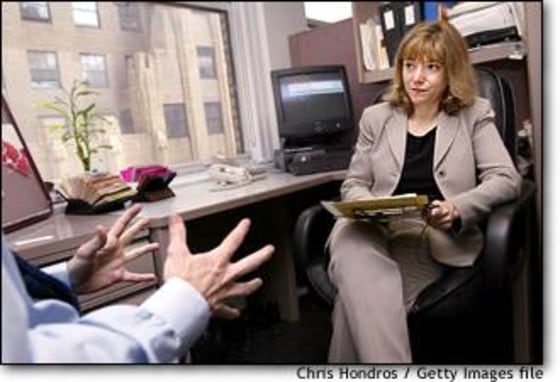A sharp and surprising jump in the nation’s jobless rate to a nine-year high disappointed Wall Street traders, Washington policy-makers and ordinary Americans, raising doubts about a much-anticipated economic rebound. Yet despite five straight months of declining employment, economists say trends still support the case for a strong increase in growth that ultimately will improve results for the nation’s millions of frustrated job-seekers.
The unemployment rate rose to 6.4 percent in June from 6.1 percent, the biggest one-month jump in more than a year, bringing the politically sensitive number to its highest level since April 1994, as the economy lost 30,000 jobs. Both figures were worse than anticipated by forecasters and investors. The number of claims for initial unemployment benefits, reported weekly, also rose unexpectedly to 430,000, a level consistent with declining employment.
Yet Wall Street showed only a mild reaction, with stocks falling about 0.8 percent in light, pre-holiday trading. Bond prices, which usually rally in reaction to bad economic news, fell Thursday as traders focused on signs that the economy is at a turning point, including a separate report indicating that the service sector surged in June to its highest level in nearly three years.
Analysts found reasons to be optimistic even in the generally disappointing monthly employment report.
For one thing, the number of people looking for work rose by more than 600,000, partly because of teenagers seeking summer jobs, but also a result of recent signs that the economy might be on the road to improvement, including growing consumer confidence and rising stock prices.
“People are getting a little bit more optimistic about jobs and coming back into the job market,” said Vince Boberski, senior economist at RBC Dain Rauscher. He and other economists also pointed out that the economy has lost only 120,000 jobs over the past three months, compared with 270,000 in February and March. The number of workers in temporary jobs — who often are hired before employers are ready to create permanent jobs — increased for a second straight month.
“I don’t think you can say with these numbers this morning that the situation in the job market is anything close to what anyone wants to see, but it is trending in the right direction,” Boberski said.
The battered manufacturing sector, however, continues to move in the wrong direction and now has lost jobs for 36 consecutive months, including another 56,000 in June.
The steady loss of factory jobs raises questions of whether the manufacturing sector is suffering from something more fundamental than a long cyclical downturn.
“Certainly the service sector is doing much better, but to me the defining event is going to be what happens in the manufacturing sector,” said Sung Won Sohn, chief economist at Wells Fargo. “We’ve got to fix the manufacturing sector.”
Although manufacturing accounts for only about 14 percent of U.S. output, it is the most volatile component of the economy and therefore needs to turn up before the overall economy can see significant improvement. One problem identified by some analysts is the increasing reliance on cheaper labor available in factories around the world, including places like China and Mexico.
“Outsourcing is a problem factor, but it’s not the main problem,” Sohn said. Lack of consumer demand and lack of business confidence are far more important issues, he said. Ultimately businesses are expected to boost capital spending, increasing demand for U.S.-made goods. “But we’re not at that stage yet,” Sohn said.
Sohn continues to expect the economy to rebound substantially in the second half of 2003, soaring on a tailwind of record-low interest rates, a massive tax-cut package and a weakened U.S. currency. But he said Thursday’s employment report puts that forecast at risk.
“My confidence in the forecast has diminished a bit as a result of this jobs report,” he said.
Ed McKelvey, senior economist at Goldman Sachs, said he expects companies to begin hiring in the second half of the year as they reach the limit of what they can achieve through productivity gains alone. But he said in a note that he expects job growth to fall “considerably short” of the 2 to 4 percent rate normally seen in a recovery.
One reason: The housing sector, which never turned down in the recession, is unlikely to grow much further from current high levels of activity. If businesses gain more confidence in the sustainability of a rebound, they may begin hiring more freely, he said, presuming that financial conditions do not deteriorate further.
For the week the Dow Jones industrial average gained 0.9 percent, rebounding from last week’s loss after the Federal Reserve’s decision to lower short-term interest rates by only a quarter-percentage point, rather than the half-point that many on Wall Street expected. Despite the bad news on unemployment, car and truck sales reported this week were stronger than expected. And for people who have jobs, inflation-adjusted wages are growing steadily, said Gerald Cohen, senior economist at Merrill Lynch.
“I think there is enough stimulus to get us a pickup in growth,” said Cohen. “The question going forward is whether the pickup in growth leads to further growth, whether it has self perpetuating momentum.”
